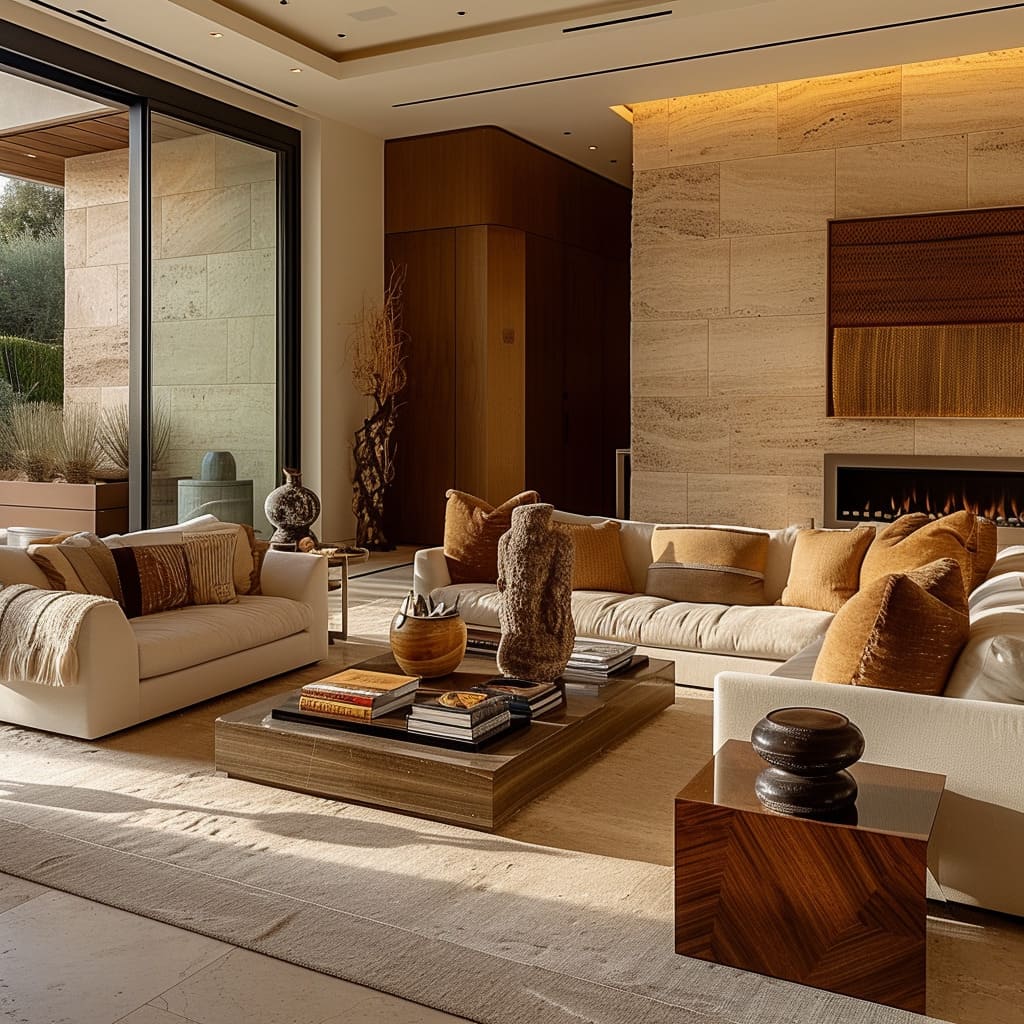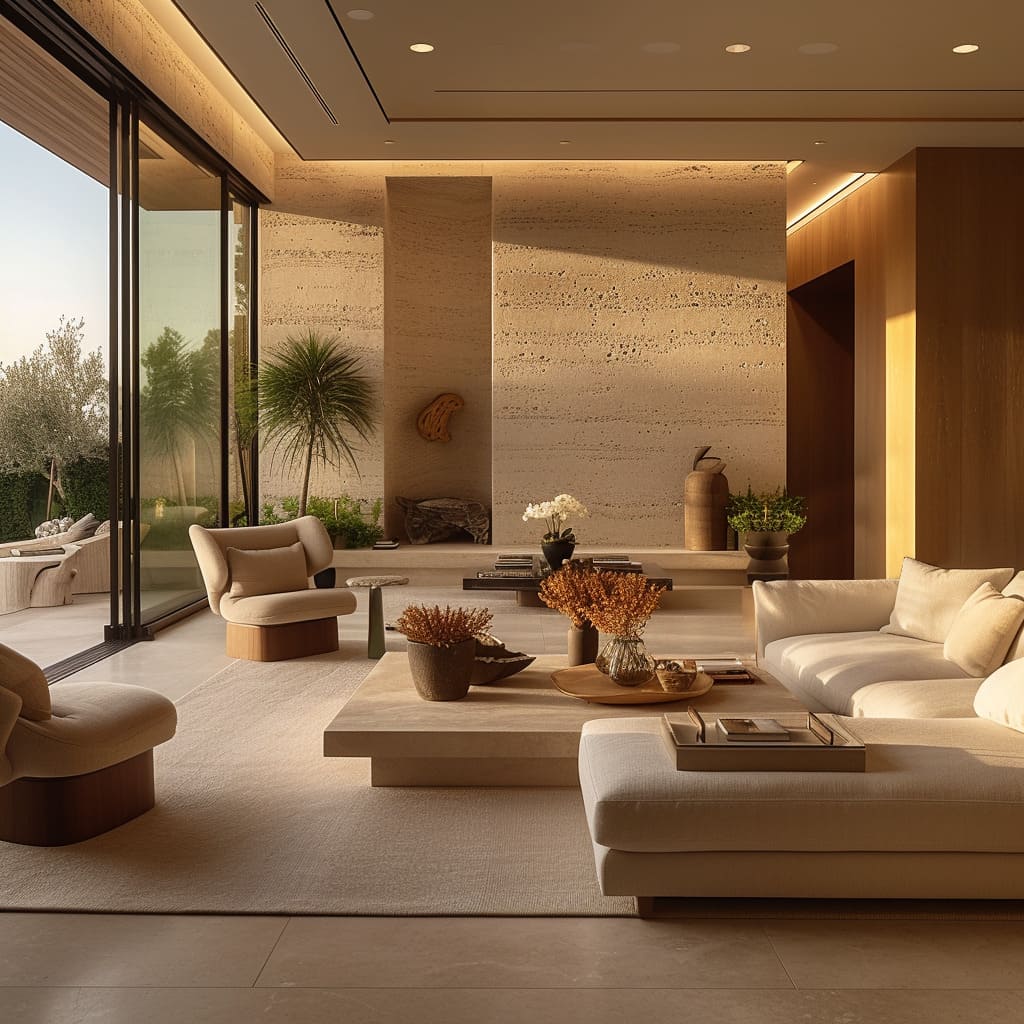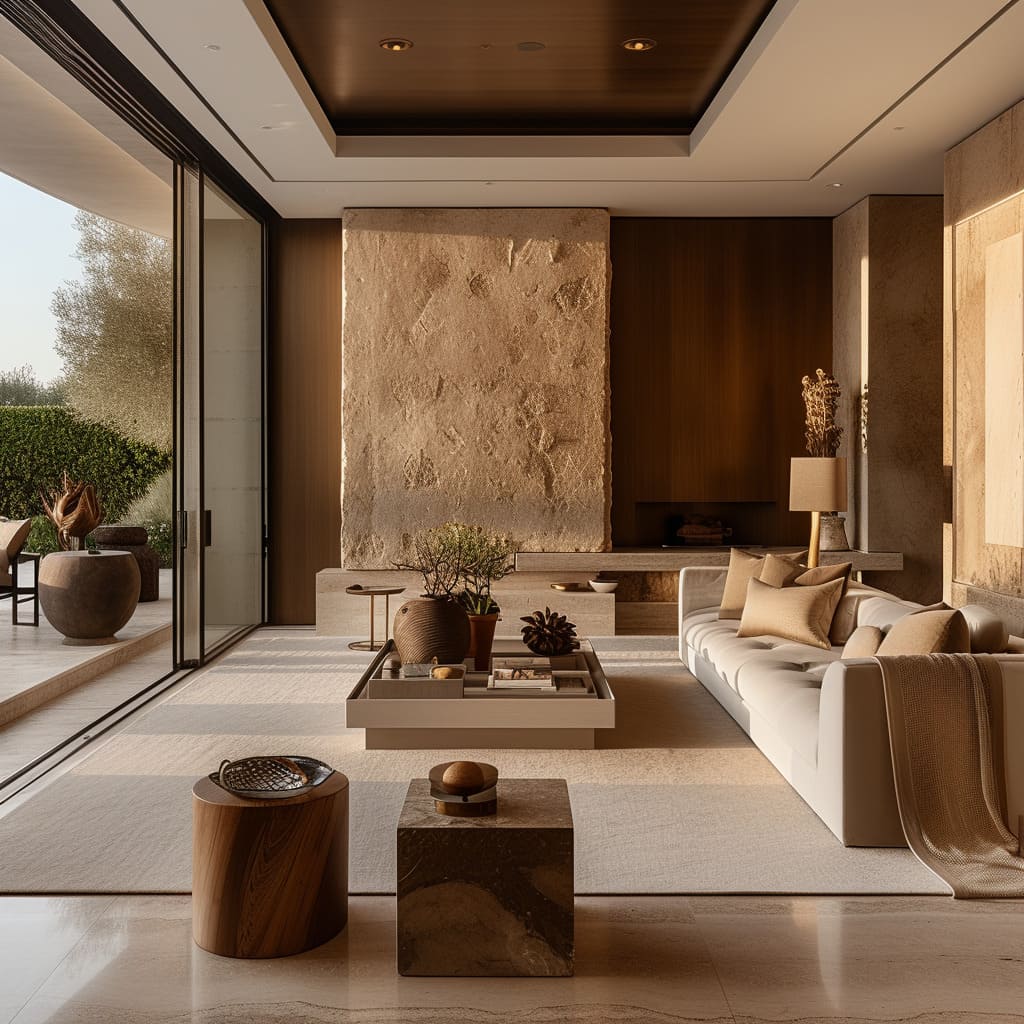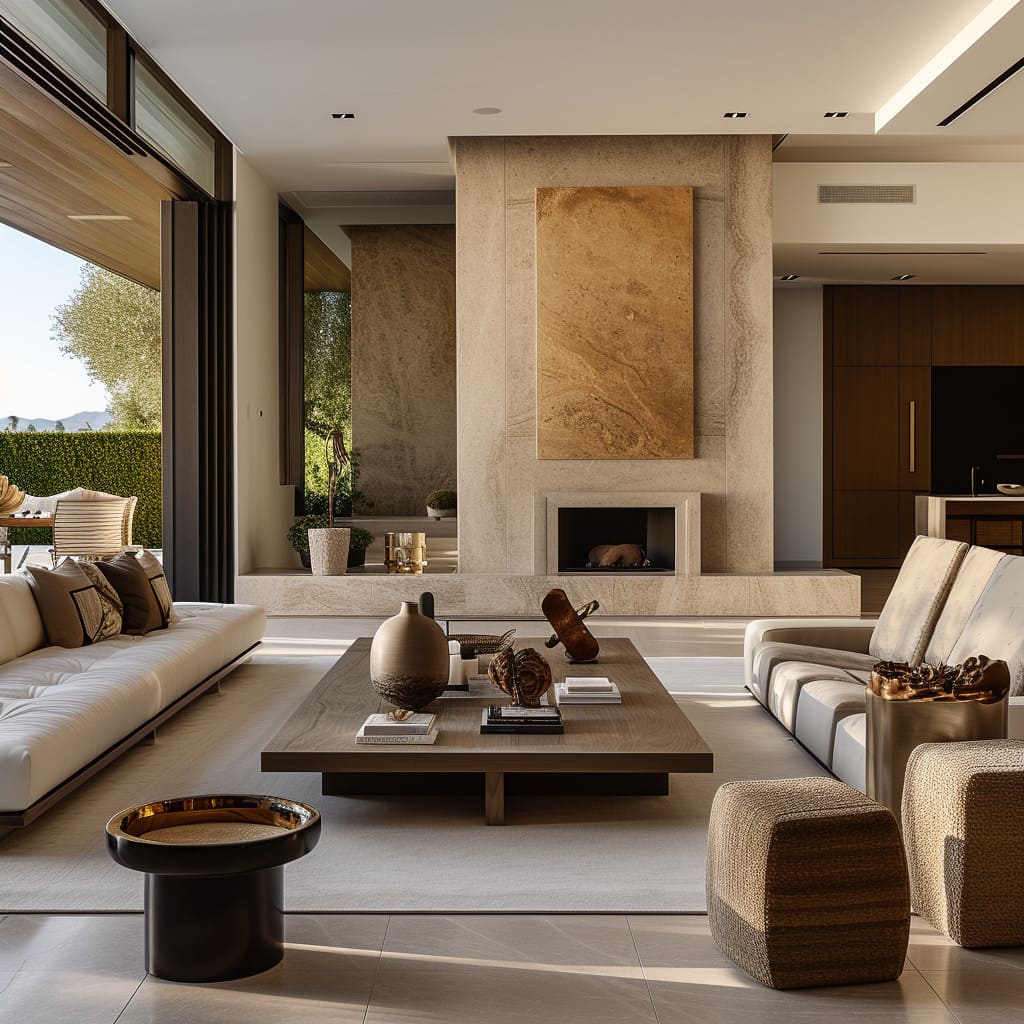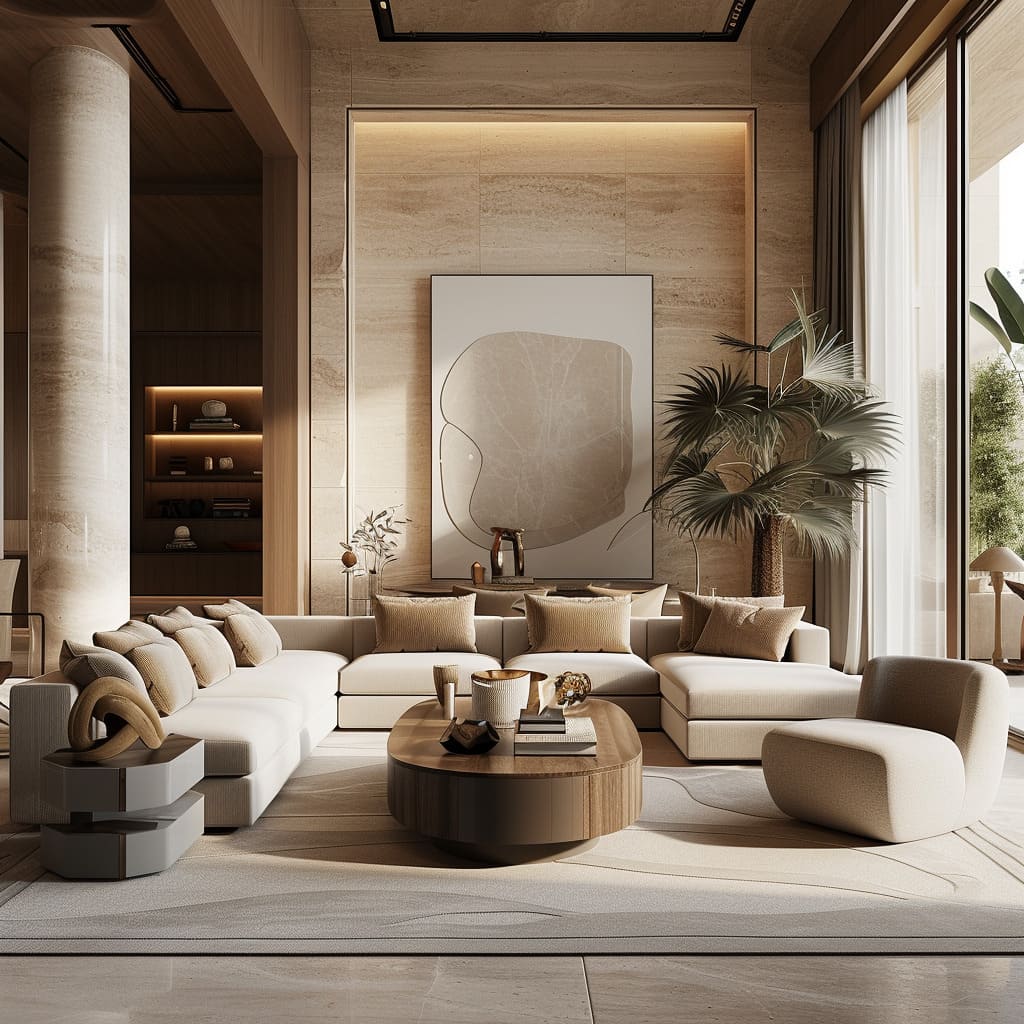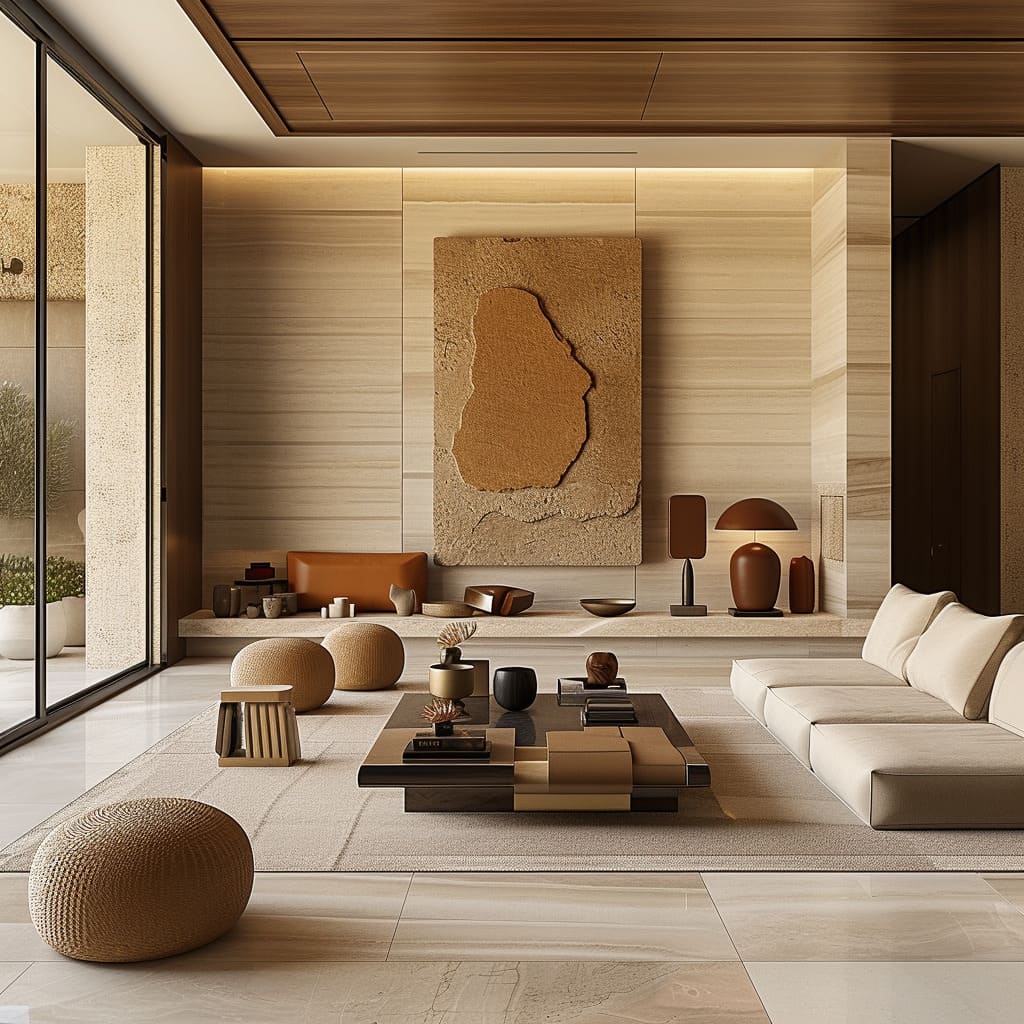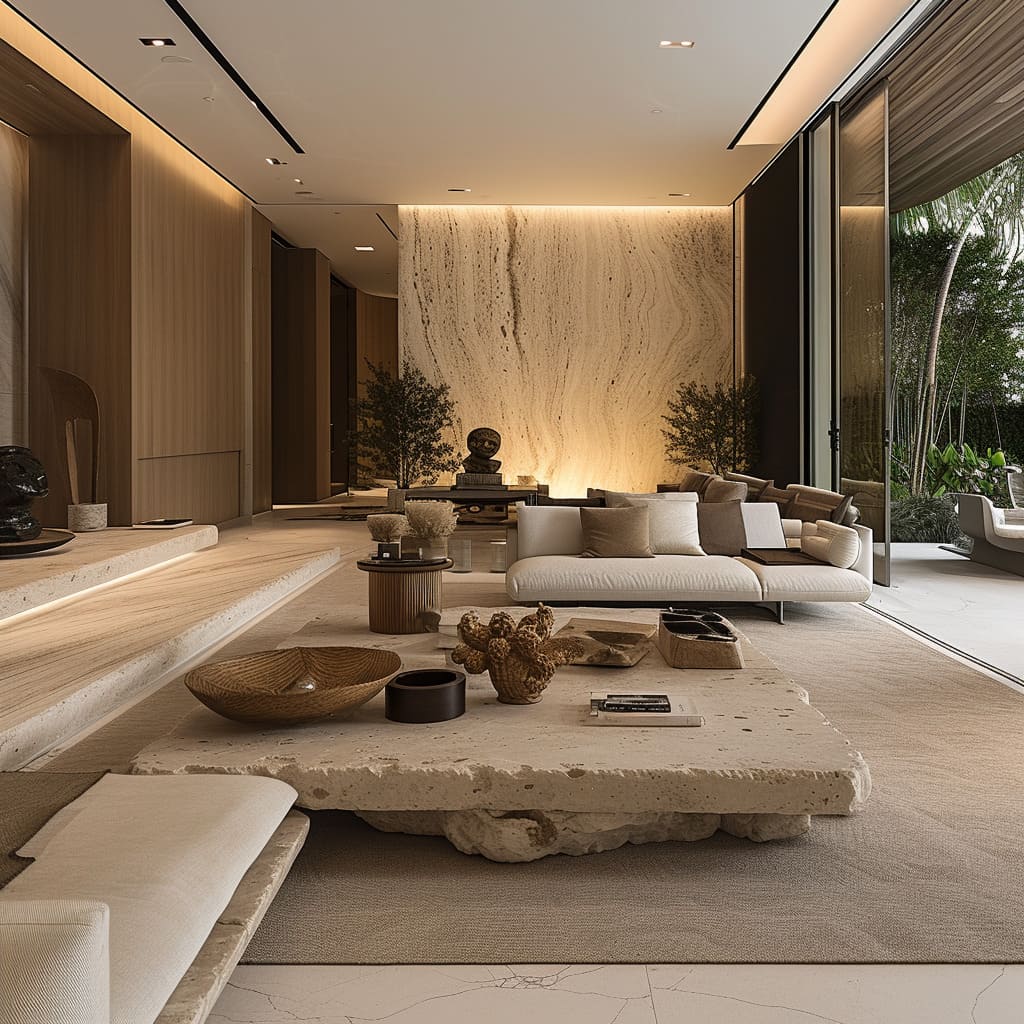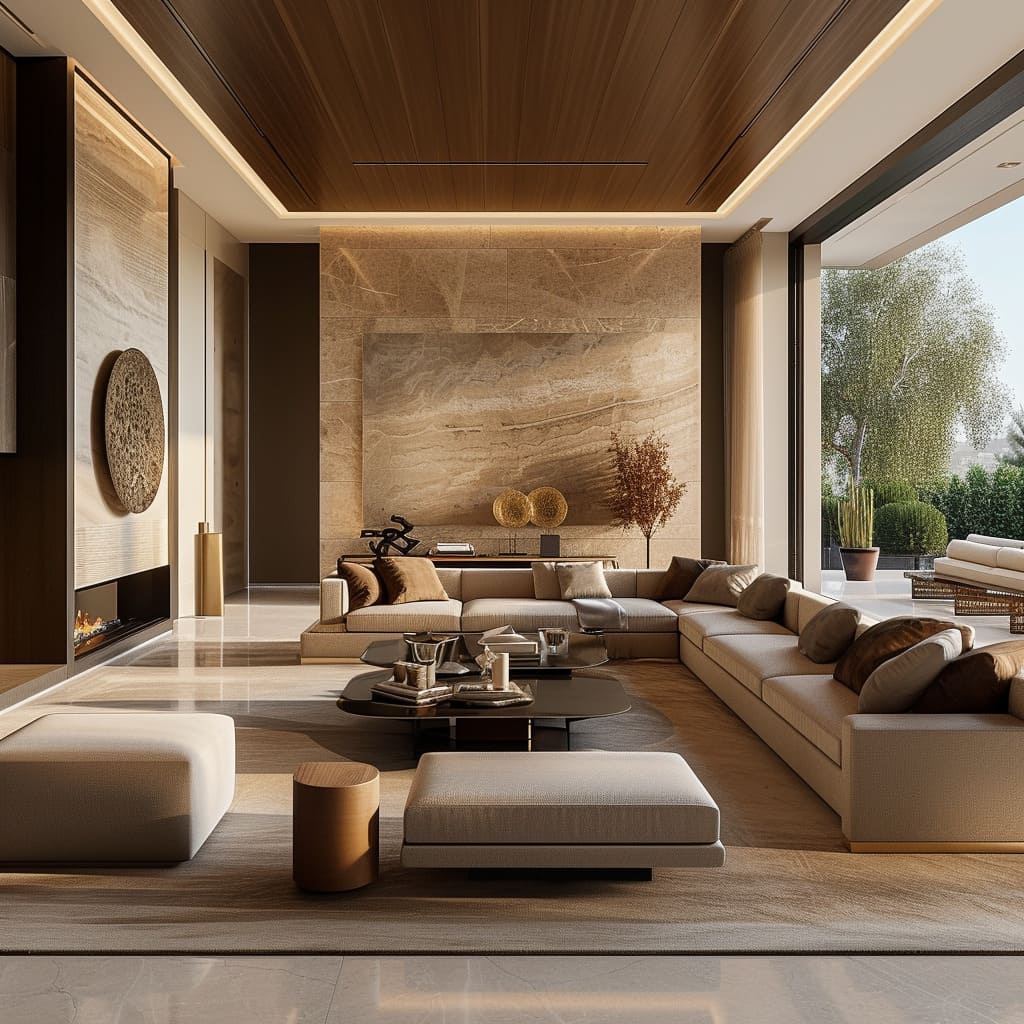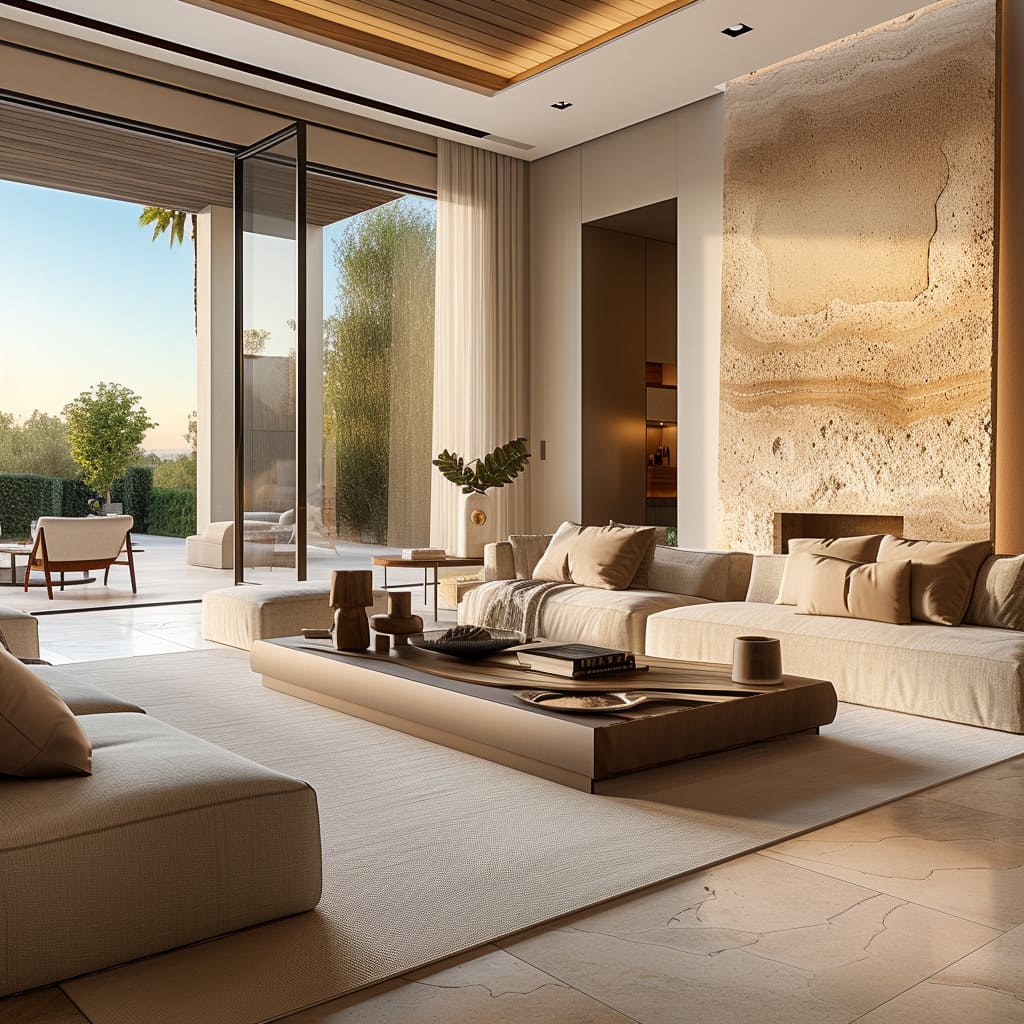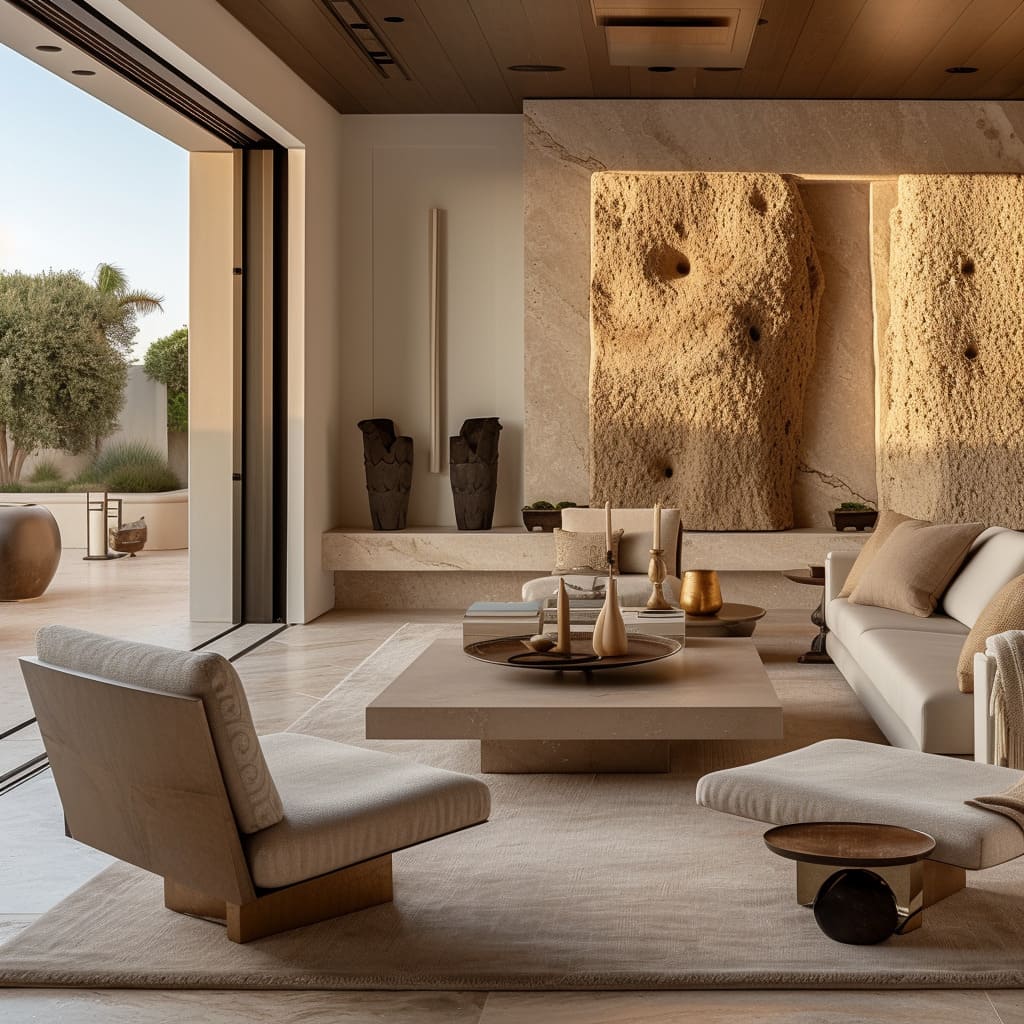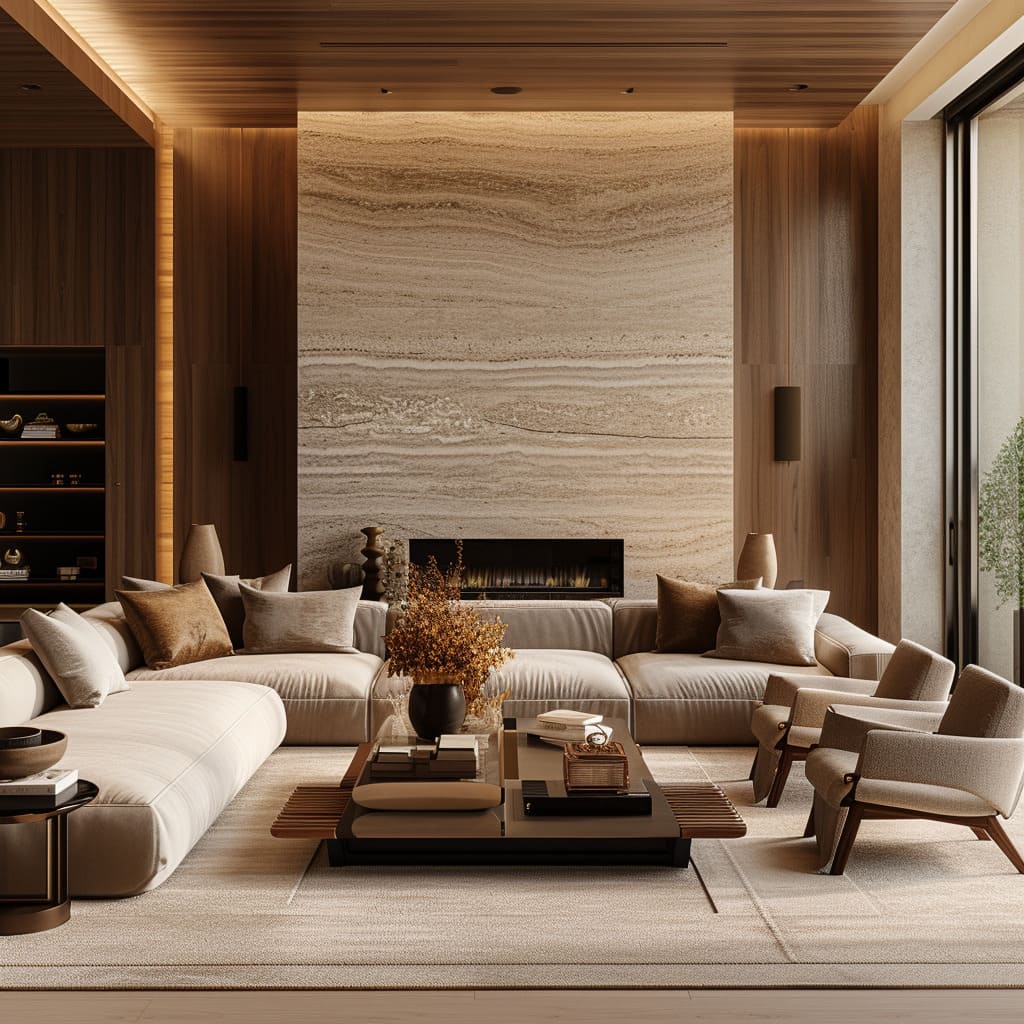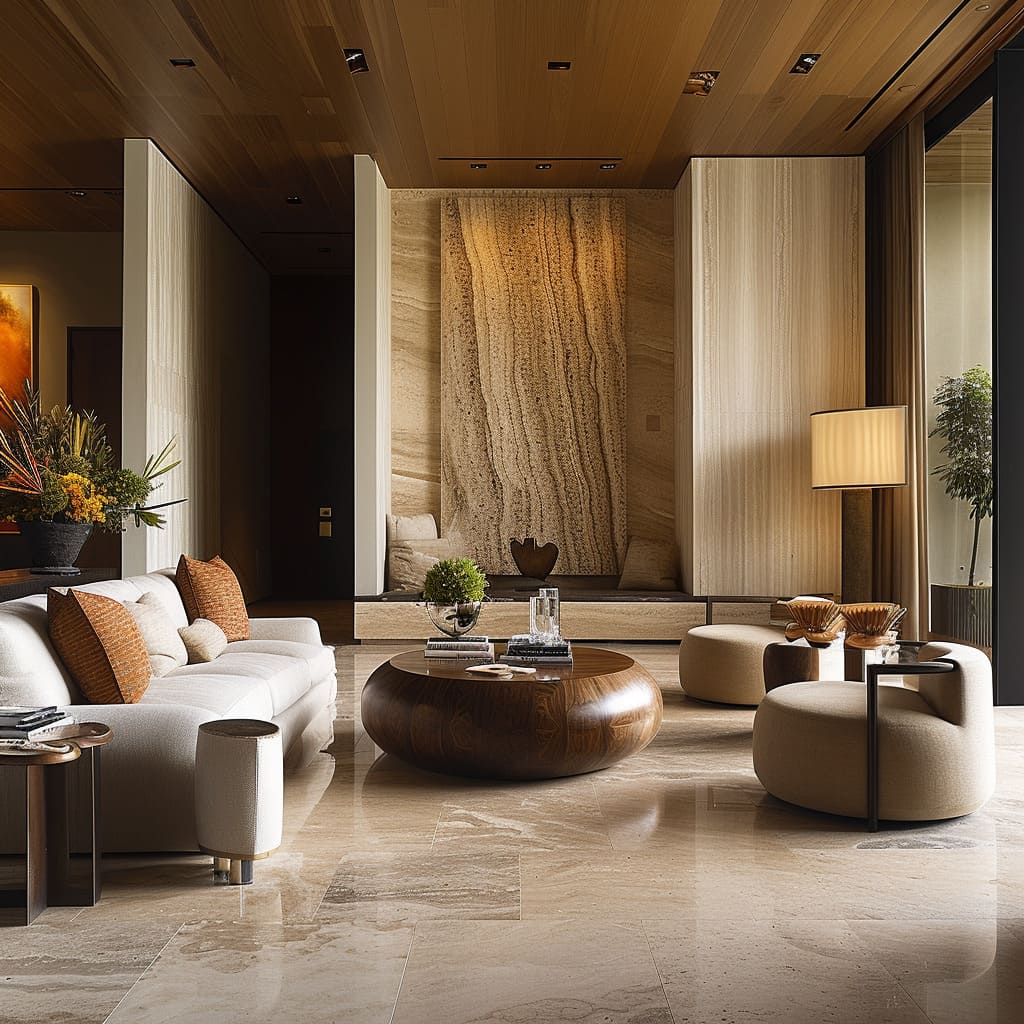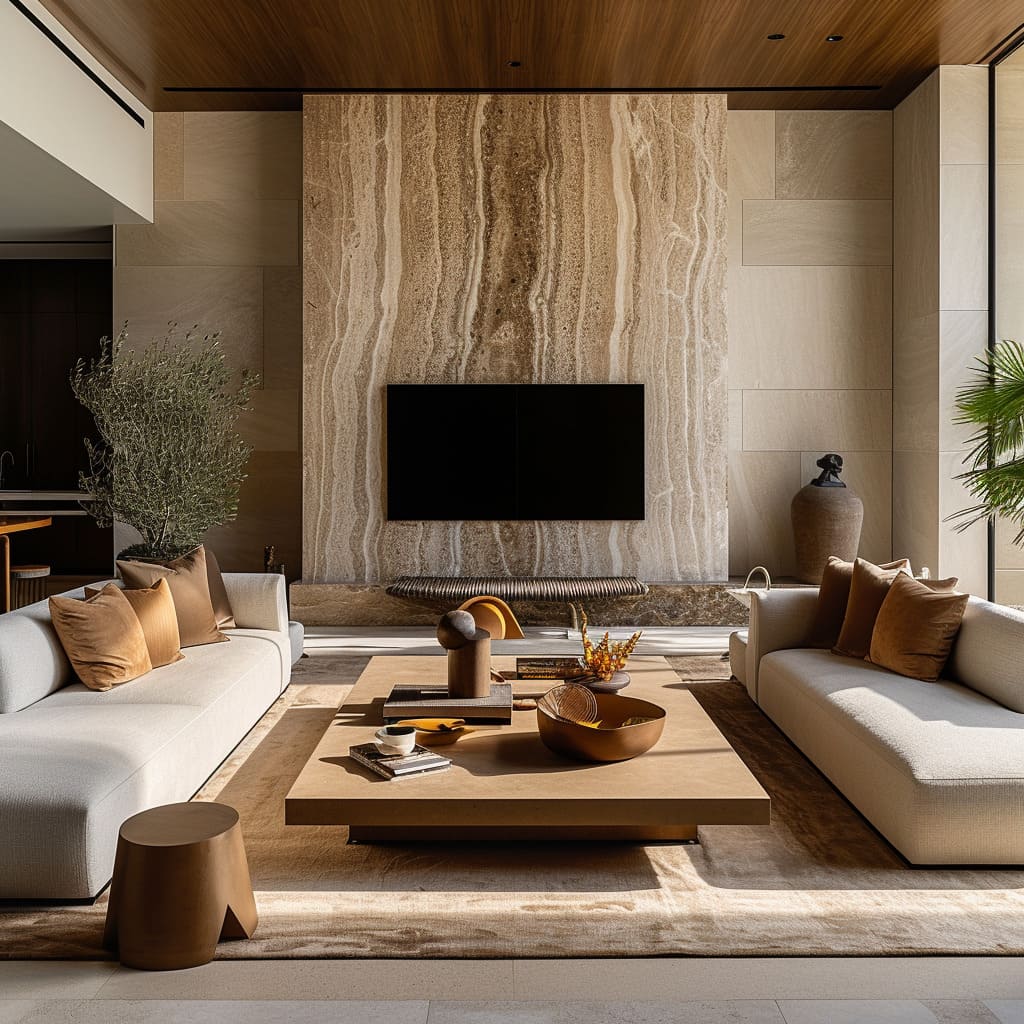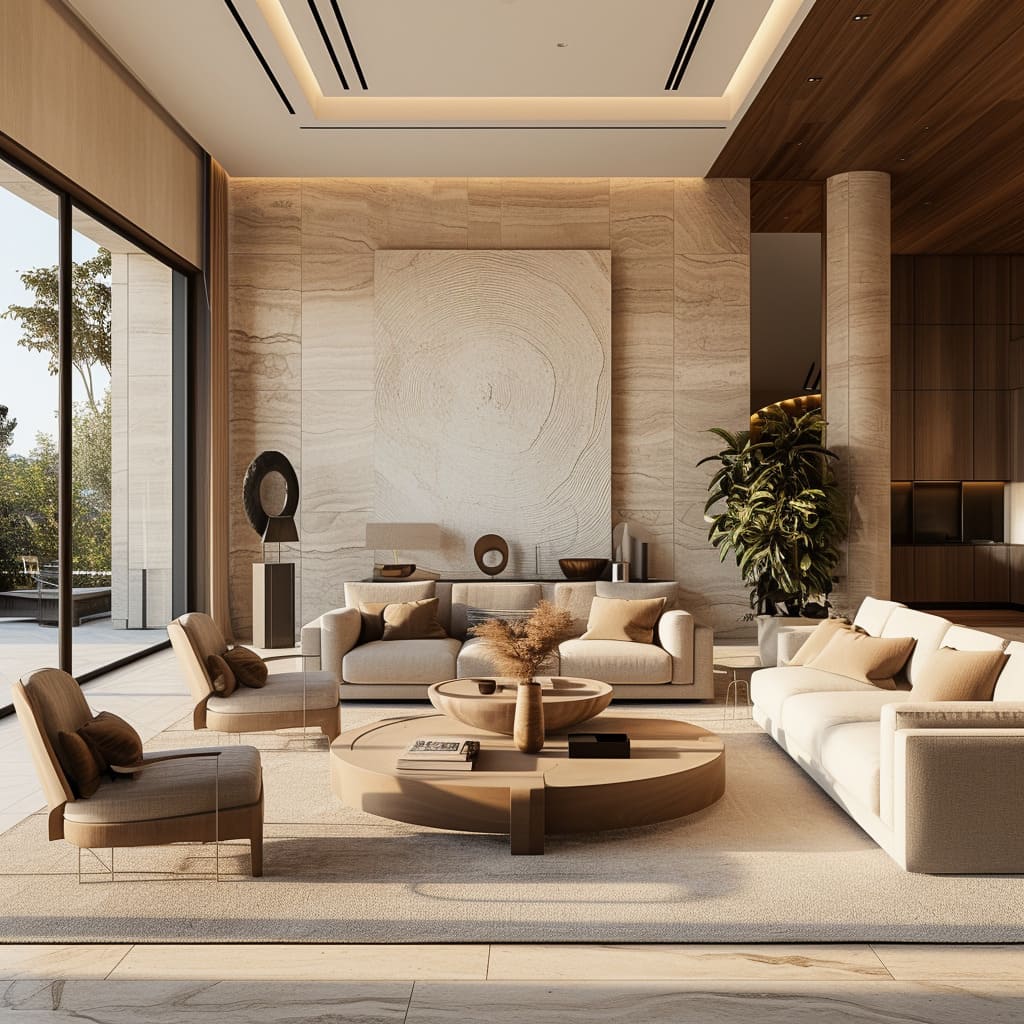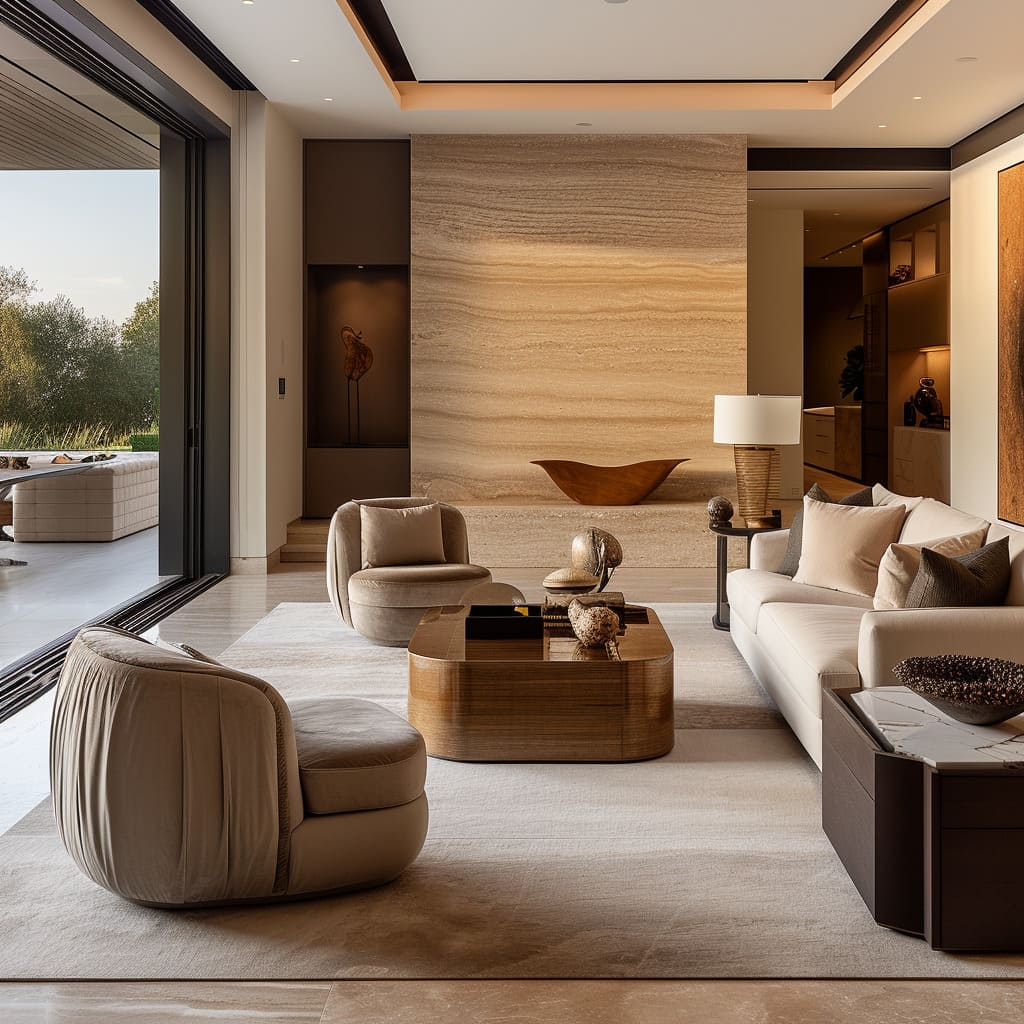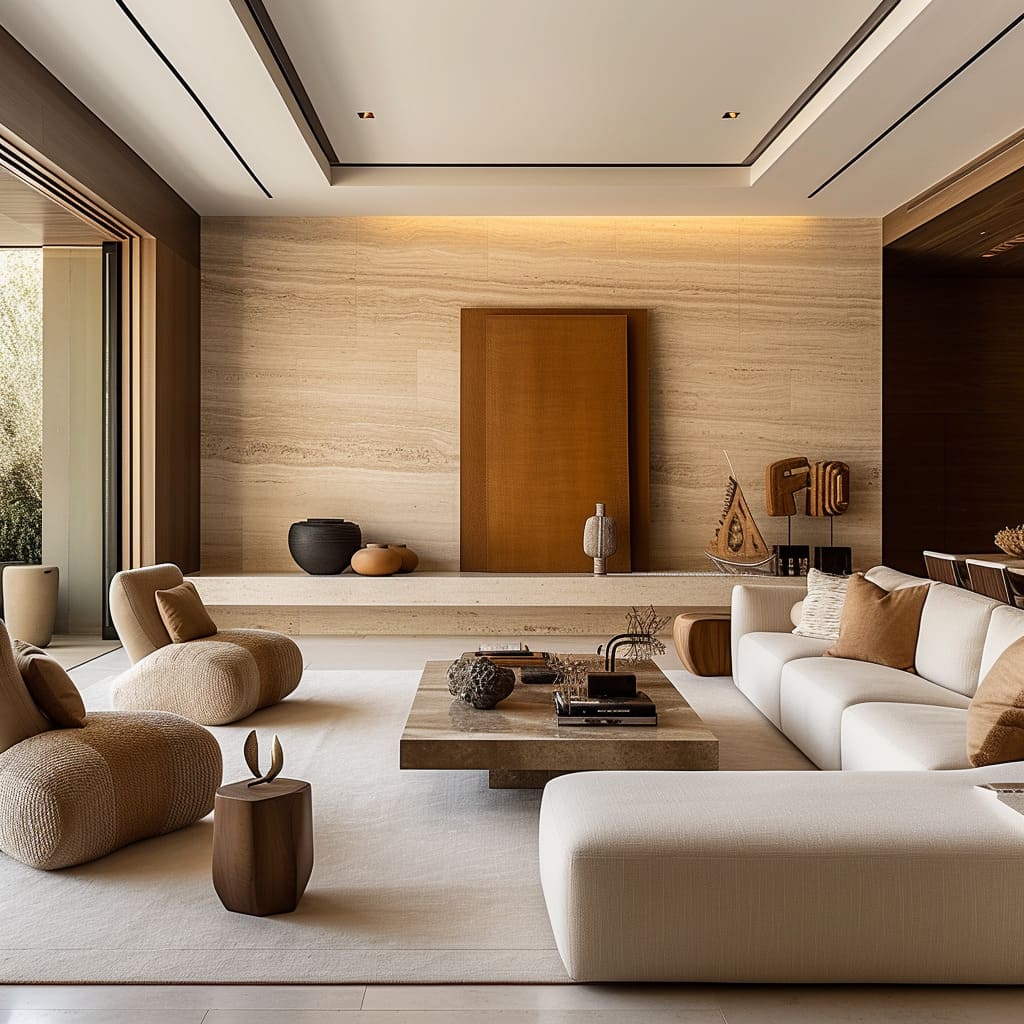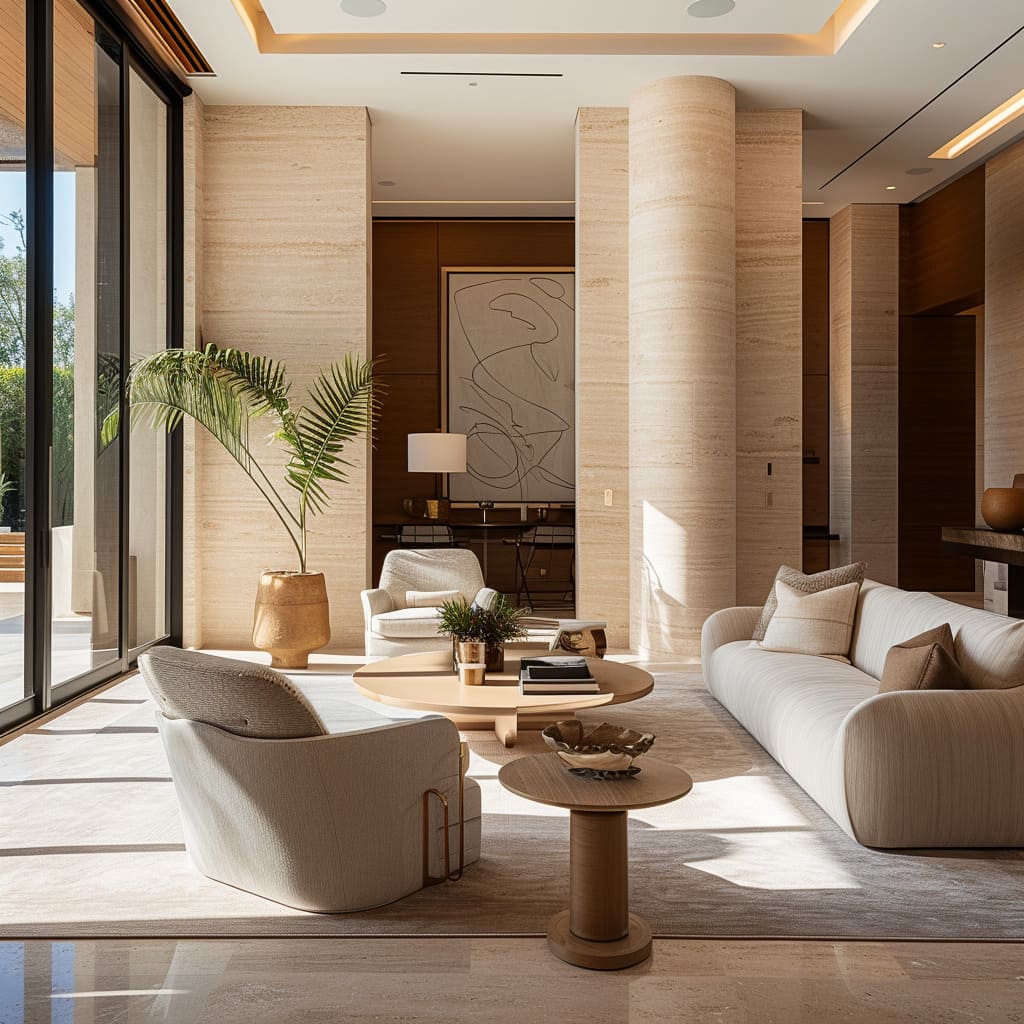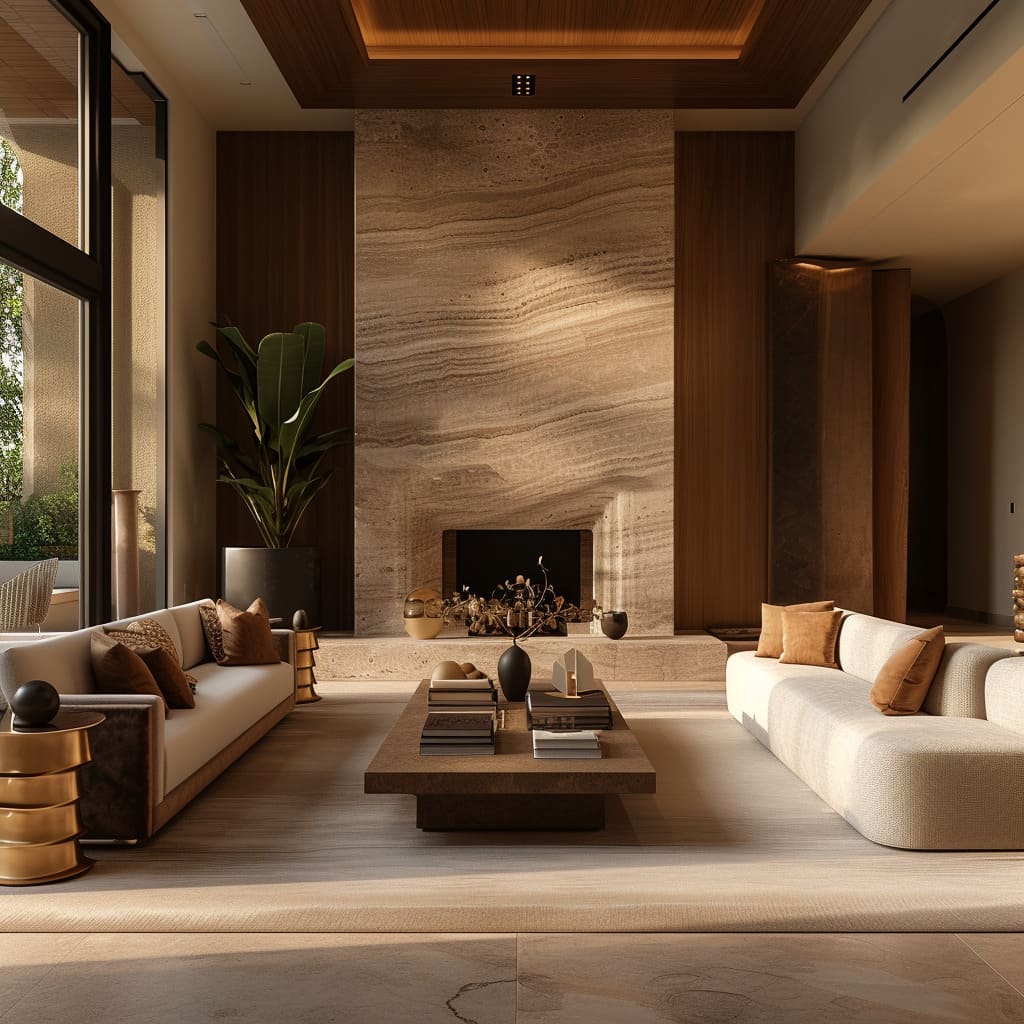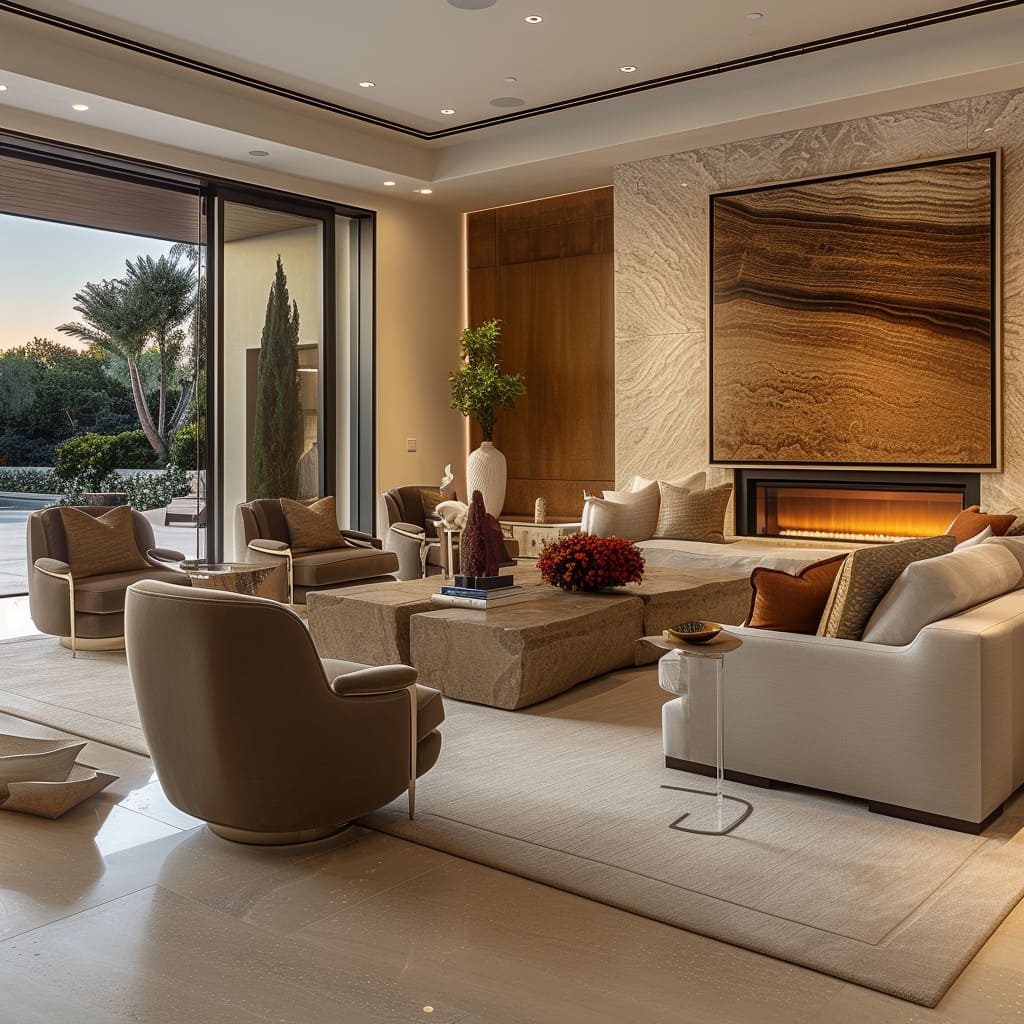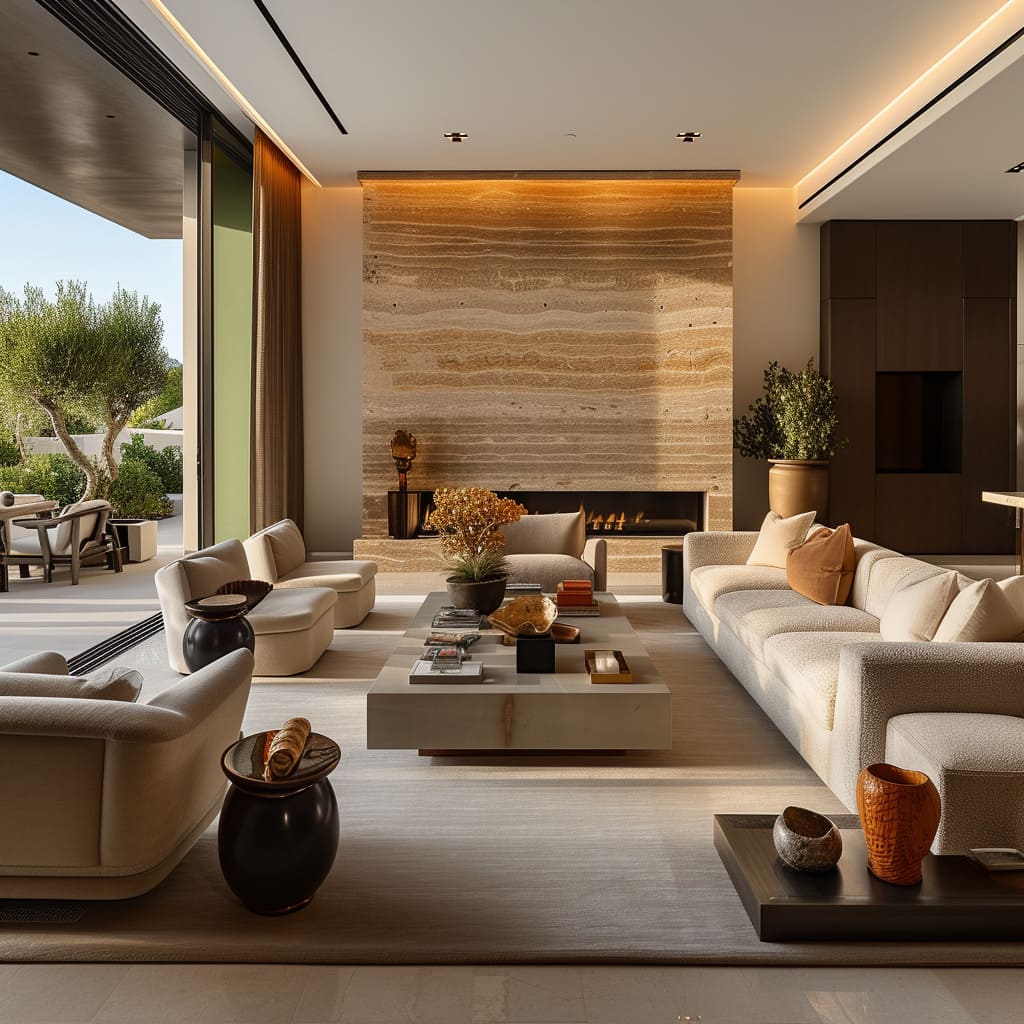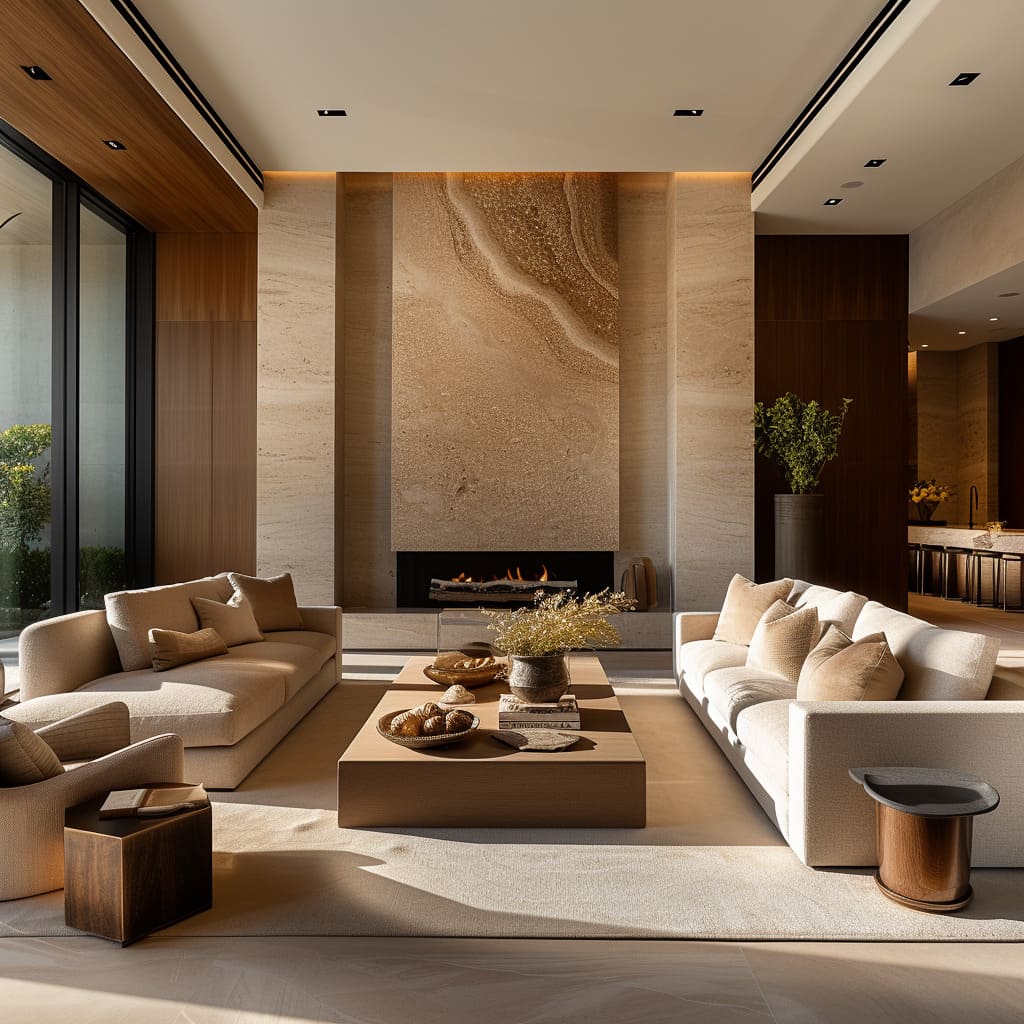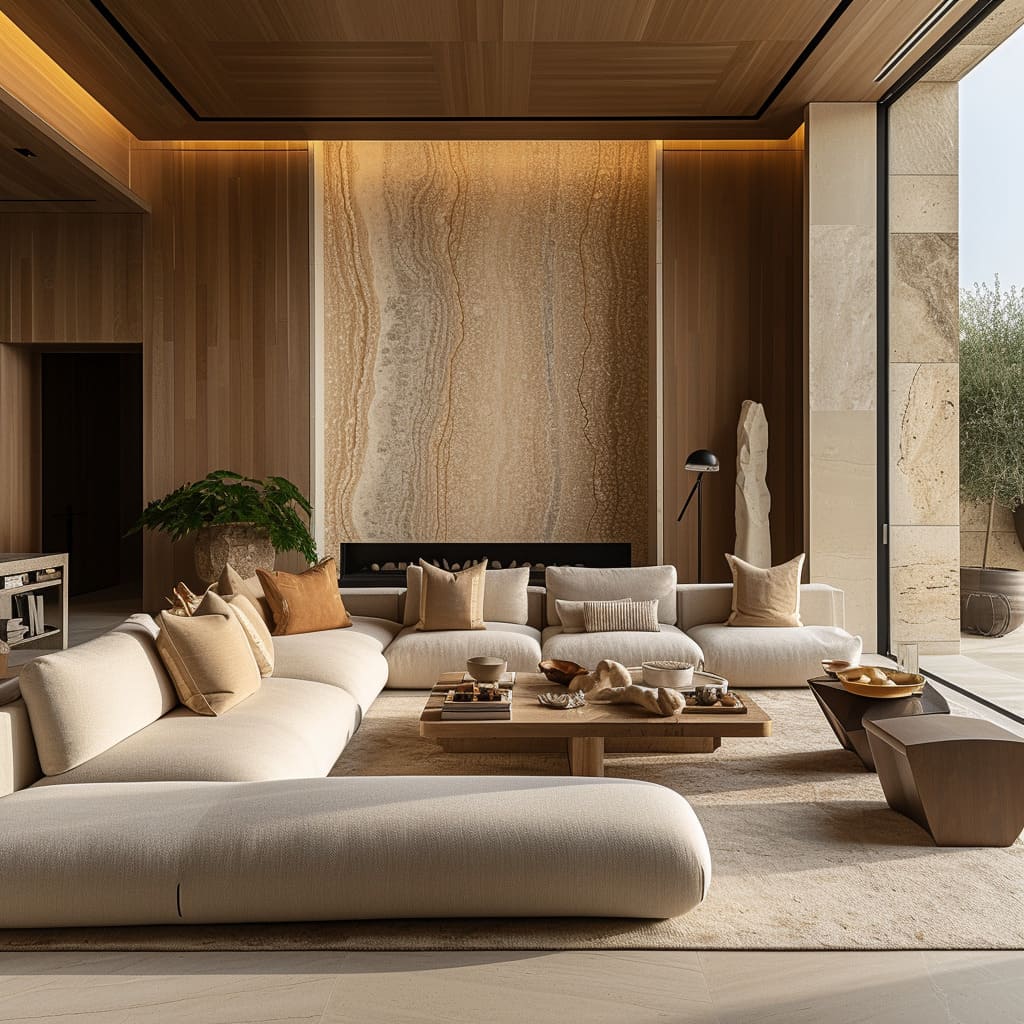The materials we choose are as integral to the character of a space as the furnishings and the layout. Among the plethora of options available to architects and designers, few materials offer the versatility and aesthetic appeal of travertine and limestone.
These natural stones have stood the test of time, not only in terms of durability but also in their ability to imbue spaces with a sense of sophistication and natural beauty. In this exploration of their use in modern interiors, we’ll delve into how travertine and limestone can transform the ordinary into the extraordinary, bringing a touch of the earth’s artistry into our homes.
From majestic feature walls to elegant flooring, and from structural elements to fine accessories, these stones are masterfully utilized to create spaces that are both visually stunning and intrinsically connected to the natural world.
Feature Walls
The extensive use of travertine and limestone for feature walls creates a stunning visual anchor within each room. The natural variations in color, from creamy beiges to deeper tans, and the tactile surface of travertine add depth and a touch of nature’s artistry to the interiors.
These walls can be designed with an emphasis on showcasing the unique holes and grooves that characterize travertine, giving the space an almost sculptural quality.
For those looking to incorporate such feature walls into their interiors, it’s advisable to select stone slabs with the patterns and hues that complement the room’s color scheme and lighting. The stones can be arranged in an array of formats—from large, uninterrupted slabs to a mosaic of smaller tiles, depending on the desired aesthetic effect.
Accent lighting can be strategically placed to cast shadows and enhance the three-dimensional texture of the walls, thus elevating the overall ambiance.
Fireplace Surrounds The images suggest that the fireplace surrounds, crafted from travertine and limestone, are not only functional but also artistic statements in their own right. The hearths and mantels are often designed with clean lines that respect the minimalistic ethos, while the inherent warmth of the stone invites a gathering.
The inclusion of travertine with its pitted surface adds an ancient, almost rustic charm to the fireplaces, whereas limestone’s more homogeneous texture provides a sleek and modern finish.
When implementing a natural stone fireplace surround in an interior, consideration should be given to the scale and proportions in relation to the room’s size and ceiling height. The stone can be cut and finished to match the design language of the space, whether it’s a traditional room with ornate details or a modern space with a preference for simplicity.
Moreover, the choice between polished and honed finishes can dramatically alter the surround’s interaction with light and its overall presence in the space.
Flooring In the shared images, travertine and limestone flooring extends across the interiors in a sweeping gesture of luxury and cohesion. The large stone tiles create a sense of continuity and fluidity, with their subtle textures offering a counterpoint to the sleekness of the furniture above.
When polished, these stones can reflect the interior lighting and contribute to a brighter, more expansive feel within the room. Conversely, a honed or brushed finish provides a more matte look and can enhance the slip-resistant properties of the flooring—essential in areas like kitchens or bathrooms.
For those considering natural stone flooring, it’s important to balance aesthetic desires with practical considerations. The choice of stone size and finish should be tailored to the room’s usage, furniture layout, and maintenance requirements.
Furthermore, integrating floor heating systems beneath the stone can offset the natural coolness of the material, ensuring physical warmth to match the visual warmth of the stone’s hue.
Columns and Architectural Details The interior spaces are defined by the elegant use of travertine and limestone columns, which not only support the structure but also exude a sense of timeless beauty. These columns can range from the classical fluted designs that echo ancient architecture to the more sleek and contemporary profiles suited to modern tastes.
Explore our detailed article to see how current architects use simple yet impactful designs in modern homes.
When integrating such elements into an interior, it is important to consider the inherent characteristics of the stone, such as its veining and texture, to ensure they contribute positively to the space. The placement of columns should be strategic, enhancing the room’s proportions and creating a rhythm that guides movement through the space.
Additionally, lighting plays a critical role in showcasing these features, with soft, indirect lighting amplifying the texture and silhouette of the columns against the interior backdrop.
Integrated Furniture Elements Travertine and limestone are not merely decorative but functional when used as materials for integrated furniture. The designs show how these stones are masterfully crafted into low-profile tables and sleek benches that seem to emerge organically from the floors themselves.
The choice of such furniture pieces should be made with an eye for consistency in material and form, ensuring that these stone elements are in dialogue with the rest of the space. Edges can be beveled or rounded, depending on the desired level of refinement and safety considerations, especially in households with children.
The use of stone for furniture also calls for thoughtful pairing with soft textures and upholstery to balance the hardness of the stone with the comfort expected in a living space.
Decorative Accessories Within these interiors, travertine and limestone transcend their traditional roles to become art objects in their own right. Sculpted into vases, bowls, and abstract forms, these accessories act as a bridge between the architecture and the smaller scale of human interaction.
When selecting or designing stone accessories, attention to detail is paramount. The weight of the stone should be considered for practicality and placement, ensuring that the pieces can be moved if necessary.
The finish can vary from highly polished to maintain a shine, to a more matte or even rough texture for a tactile experience. The color and pattern of the stone should be in harmony with the interior color palette, with lighter stones often providing a subtle contrast against darker woods and materials.
These stone accessories can be strategically placed to catch the eye, serve as conversation starters, and add an additional layer of luxury to the space.
Shelving and Niches In the observed interiors, travertine and limestone are masterfully carved into the walls to create shelving and niches that offer both functionality and aesthetic appeal. These elements serve as an integral part of the design, maintaining the flow of natural stone throughout the space while providing practical storage.
When designing with stone shelves and niches, it’s important to consider the weight-bearing capacity and ensure that they are properly supported, especially if they are to hold heavier objects. The depth and height of these recesses should be proportional to the wall’s dimensions, creating a balanced look.
For a more dramatic effect, incorporating lighting within these niches can cast a glow that further emphasizes the texture of the stone and the items displayed within, whether it be fine art or simple decorative pieces.
Outdoors and Transition Spaces The seamless integration of travertine and limestone from the interiors to the exteriors in these spaces blurs the line between inside and outside, encouraging a harmonious transition. The continuity of materials suggests a dialogue between the home and its surroundings, a feature that is particularly effective in properties with significant natural vistas or landscaped areas.
To achieve this in your own space, consider the continuation of stone flooring through to an outdoor patio, or use the same stone to clad both indoor and outdoor features such as walls, water features, or fireplaces. The transition spaces can also be enhanced with the use of sliding glass doors or large windows, which not only invite natural light but also allow for unobstructed views of the stone as it passes from one environment to the other.
Natural Light Interaction The strategic placement of travertine and limestone in areas that receive abundant natural light can dramatically transform an interior space. As the sun moves across the sky, the play of light and shadow on the stone’s surface can animate a room, creating an ever-changing display that responds to the time of day and season.
To maximize this effect, consider the orientation of the stone’s placement in relation to windows and other light sources. For example, a travertine wall that catches the morning light can warm the space with its golden tones, while a limestone feature in the path of the setting sun can glow with a soft radiance.
The use of sheer curtains or adjustable blinds can help modulate the intensity of the light, allowing for control over the ambiance and the degree to which the stone’s natural patterns are highlighted. This interplay between light and stone not only enhances the visual appeal of the material but also connects the interior with the natural rhythms of the external environment.
Travertine and limestone enrich these interiors, serving multiple roles from structural to decorative. They shape feature walls that captivate with organic textures, and as fireplace surrounds, they combine functionality with luxury.
As flooring, they offer cool, durable surfaces, while also forming elegant staircases that enhance the journey between levels. Architecturally, they clad columns and integrate into furniture, blurring the distinction between construction and design.
Carved into shelving and accessories, they provide practical storage and artistic flair. These stones extend their influence to outdoor spaces, creating seamless transitions from inside to out.
Moreover, their interaction with natural light adds a dynamic visual layer, highlighting their natural beauty. In essence, travertine and limestone are central to creating a harmonious, luxurious, and cohesive living environment.



